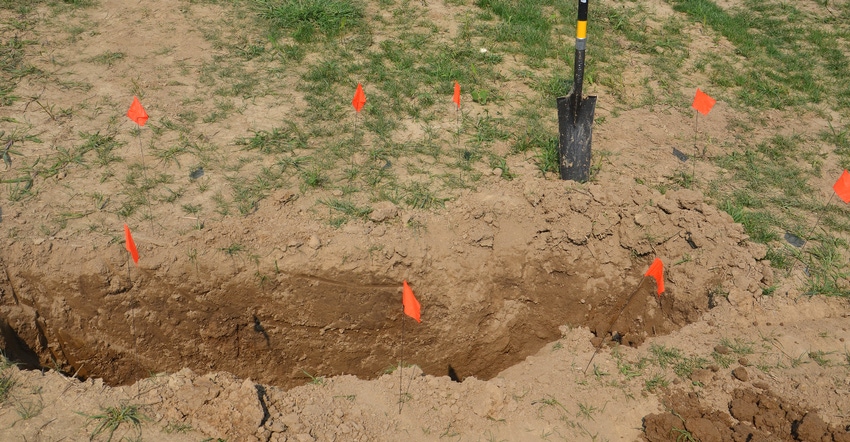
Farmers like large, central-fill planters. But they’re also concerned about potential yield loss due to soil compaction. Fendt and Agco used their five Crop Tour sites to document if these concerns are real.
“The corn growing in the center rows planted with a central-fill planter pass is impacted by soil compaction, created by both planter and tractor, and sometimes you can see a yield difference,” says Jason Lee, a field agronomist with Agco. “We did trials with 16- and 24-row Fendt Momentum planters in 2020, and we found virtually no yield difference between center rows and wing rows where soil conditions were extremely fit. However, we saw a yield loss between center rows and wing rows at sites where soil conditions were wetter than we would like.”
At one location where soil conditions were wet, Lee found a significant yield loss in the center third of the planter. Calculated across the field, the loss amounted to around 3 bushels per acre. In a separate trial, the tractor pinch-row effect alone on rows receiving tractor wheel traffic on both sides dropped yield about 9 bushels per acre. For a 16-row planter, that’s a 1- to 2-bushel-per-acre loss across the field.
“That may not seem excessive, but at $4-per-bushel corn, that’s upward of $8 per acre,” Lee says. He adds that the Fendt Momentum planters used are designed to minimize soil compaction, with more favorable wheel alignment and a Load Logic system that distributes weight across the frame. Losses could be higher in a planter without these features.
Mitigate soil compaction
Lee outlines ways to reduce the risk of soil compaction:
Don’t work fields with wet soils. This is still the No. 1 recommendation, even though there may be times when you can’t wait. “If you grab a chunk of soil and it crumbles, it’s good to go,” Lee says. “If it balls up and smears, you will likely create soil compaction.”
Reduce overall weight on a central-fill planter. You could partially fill seed hoppers and fertilizer tanks or revert to individual-row seed boxes to spread weight. However, both moves work against increasing efficiency, Lee notes.
Rethink tire size and placement on tractor and planter. About 70% to 80% of soil compaction happens on first contact, Lee says. Tracks, larger duals or high-flotation tires may spread out weight distribution over a larger footprint, reducing deeper soil compaction. You could also opt for a controlled traffic pattern and keep tractor tires and planter tires in the same tracks as much as possible to localize soil compaction.
Adjust tire pressure. Lower tire pressure increases the length of the footprint and reduces surface compaction, Lee says. Tracks are an option, although reducing tire pressure on tractor and planter tires can accomplish the same thing, he notes. The problem becomes deflating tires for the field and inflating them for road travel. The Fendt Momentum planter uses a system that monitors and controls planter tire pressure, keeping it at the correct level in various situations.
Use planter weight transfer system. The idea with this system is to transfer weight from the center to the wings, Lee says. However, unless you have a system like Load Logic on the Fendt Momentum planter doing it automatically, you still may not know if weight is distributed effectively.
About the Author(s)
You May Also Like




